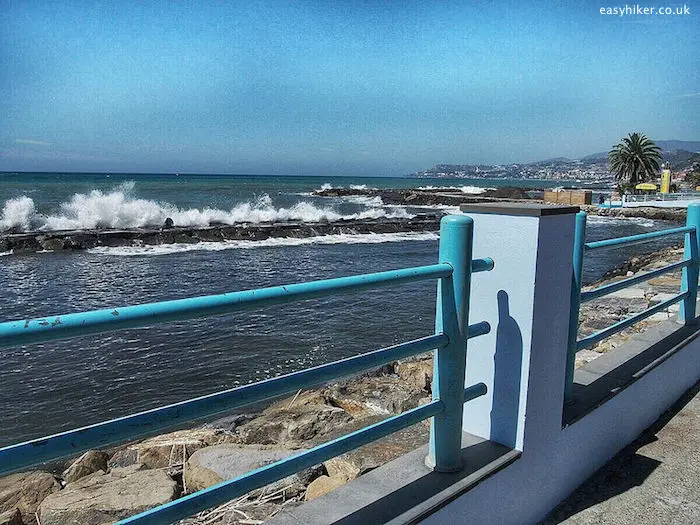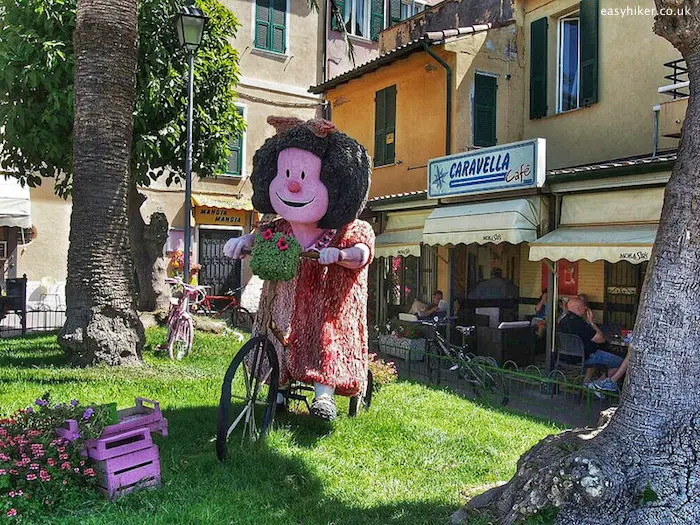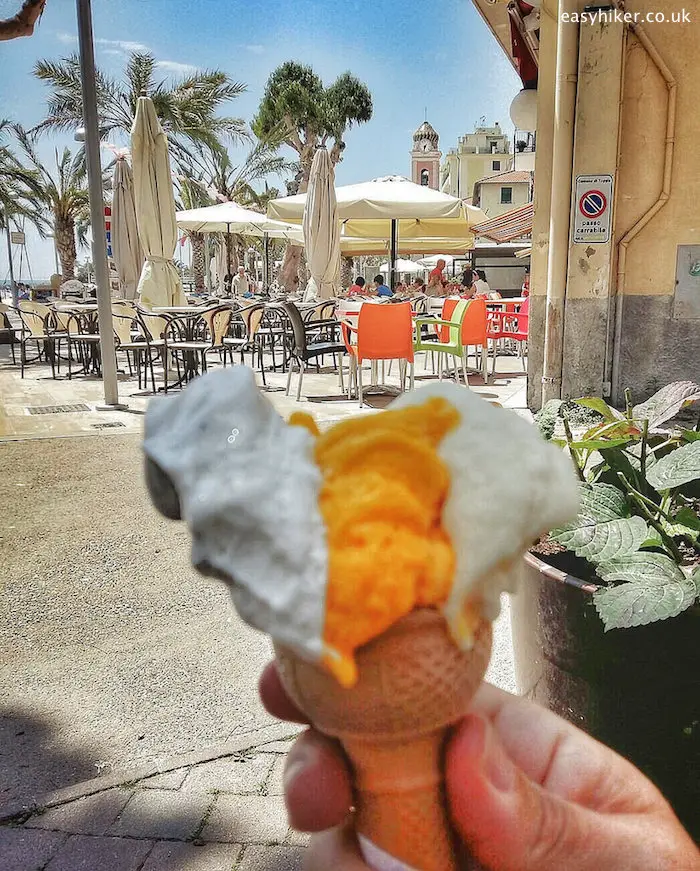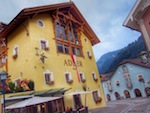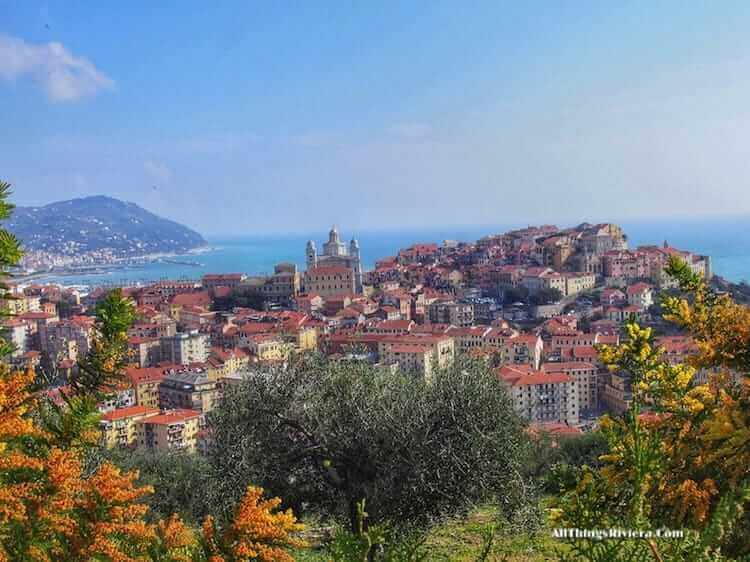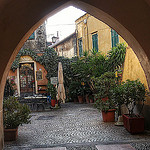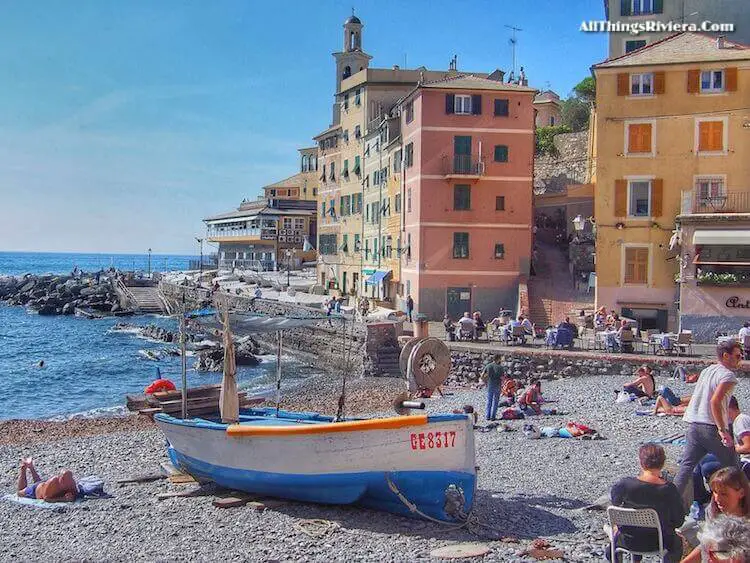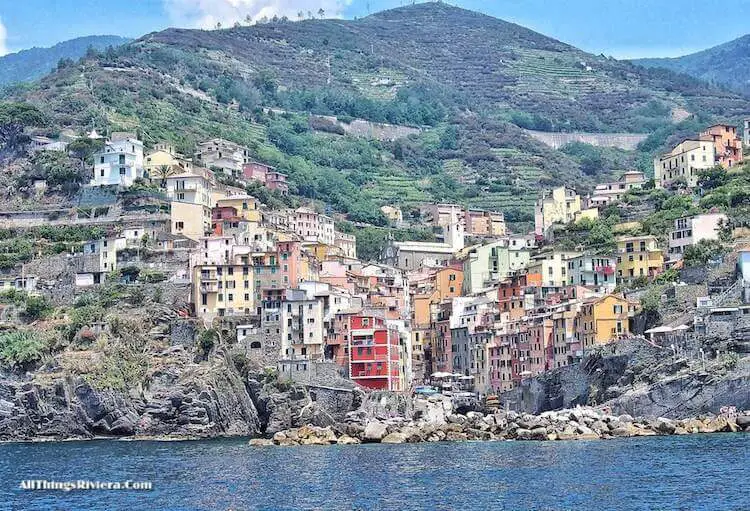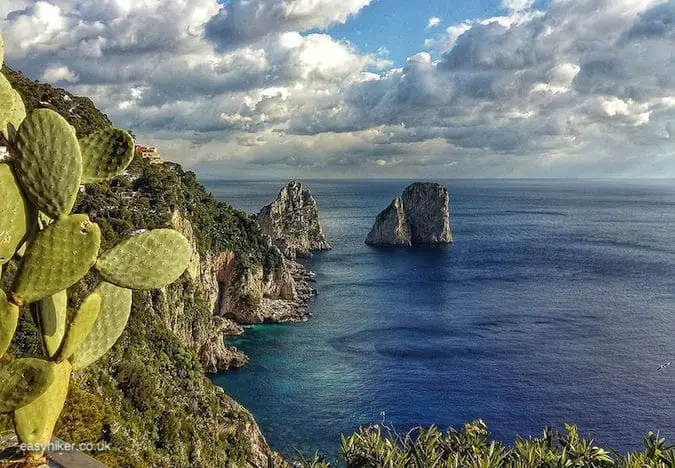More places to discover on our walk through the land that time forgot.
Villages along the Italian Riviera
In our last post, we took you down the Riviera memory lane from San Lorenzo to Santo Stefano. Today, we shall hike further down the coast, passing through more villages along the Italian Riviera that have become “unstuck in time”, in the direction of Sanremo (which has also seen better days, but that is a different story).
Before you set out on the trail, however, you should take the time for a brief visit of Santo Stefano itself, because the small town is well worth a look, with some pretty streets and an imposing seafront.
Read also: Part 1: Rip van Winkle Villages of the Italian Riviera
It is the busiest resort on this stretch of the coast, …
… and the one with the most-developed tourism infrastructure, so you have ample opportunity for taking a bite – or a swim.

To continue the walk, find the old station …
… and continue on the hiking-and-biking trail to Riva Ligure, one of the best finds along this part of the Riviera. We had expected to find another run-of-the-mill seaside resort, but in fact, it is a particularly charming little place – with quite a story to tell.
Riva Ligure was the old port of Taggia, a town a little further inland which may be run down today but which was an important centre of power in the late Middle Ages.
A lot of trade passed through Riva Ligure in the 15th and 16th centuries, and some of the money that changed hands here inevitably stuck, turning the coastal village into a fairly wealthy little town – and, in those uncertain and violent times, into a tempting target for pirate raids. Five such raids occurred between 1551 and 1562 alone, devastating the town and chasing nearly all of its inhabitants away.
The commercial port was abandoned and eventually converted into a military fortress. This, at least, served to attract some people to settle here and San Maurizio Church was built during this era of the town’s rebirth (the church dates from the late 18th century), replacing a much older church from the 1200s which had been destroyed during the raids.
Riva Ligure’s revival only gathered speed after WWII, when the Riviera was discovered by modern mass tourism. Most inhabitants of the Riviera’s coastal towns came to settle here during these years of the post-war boom, many from southern areas such as Calabria.
Riva Ligure, at any rate, has preserved a very specifically Italian-flavoured small town charm and reminded me of the coastal resort in Fellini’s Amarcord – a place, you might say, that got stuck in the 1930s rather than the 70s. (Fellini actually grew up on the other side of Italy, in Rimini on the Adriatic coast.)
Now continue across the estuary of the Taggia river …
… to Arma, the new “seaside town” of Taggia, much livelier and more dynamic than its parent city further inland, although Arma, too, feels a little like its best days are already behind it.
It still makes a difference, however, that Taggia’s best days occurred in the 16th century, whereas Arma, its “seaside twin”, experienced its Golden Age at some stage in the 1970s.
The abandoned train station of Arma, now the focal point of what seems to be a major construction project (although it is not entirely clear what is being built here – a shopping centre, I would guess), is as good a point as any to finish the walk.
There are bus stops here on either side of the street, ready to take you to either Sanremo or to Imperia. Buses in both directions leave frequently throughout the day, generally every 15 to 20 minutes.
If you still feel fresh, however, there is no reason why you should not continue to hike all the way to Sanremo – the trail passes past the old Sanremo train station which is approx. 5 km away from here.
Actually, this is one of the best things about this walk: you can make your own schedule and stop at virtually any point, because nearly the entire trail runs parallel to the main road where the buses circulate. So you can be as lazy and as energetic as you want to be – and there are plenty of places for a pizza, a cup of coffee and an ice cream, too.
Italians, after all, still make the best ice cream in the world – something else that has not changed since the 1970s.

